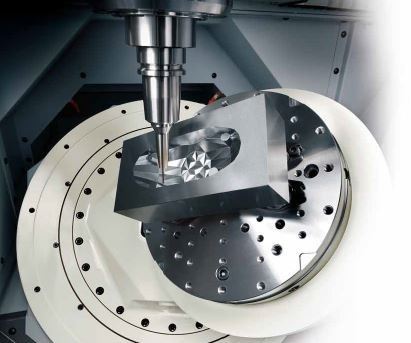Continuous Five-Axis Machining Method Reduces Tooling Costs
Makino introduces a line of five-axis continuous machines that rely on a continuous five-axis method to reduce tooling costs for die and mold machining.
Makino recognizes that recent trends in milling have focused greatly on the benefits of five-axis machining over traditional three-axis milling. However, most applications are not processed in true continuous five-axis motion, but rather in a 3+2 method that can result in more complex programming, undesirable surface blends and longer cycle times. Makino believes that five-axis milling provides even greater potential and benefit to Die/Mold machining by using a true five-axis continuous (5XC) machining approach.
Makino advocates the 5XC technique for die and mold component manufacturing by showing large cycle time savings, improvement in surface quality and reduced cutting tool costs with this method. Makinos says that the 5XC process simplifies the milling cutter selection and eliminates the number of milling tools required to complete a part. This is accomplished by leveraging the 5XC motion of the machine tool to use the entire cutting surface of the tool, where a 3+2 process uses only a single contact point on the tool. Makino has recently expanded its D-series of 5XC VMC’s with the new D200z which is designed specifically for the needs of the die and mold market. Makino is in booth 111 at Amerimold 2018.
Related Content
-
More Than Moldmaking at PTXPO 2023
The Moldmaking Pavilion returns to the Plastics Technology Expo (PTXPO) March 28-30, 2023, at the Donald E. Stephens Convention Center in Rosemont, Illinois, but there’s more to discover than moldmaking.
-
Where Mold Manufacturing and Plastics Processing Connect
The Moldmaking Pavilion is one of seven pavilions returning to the show that houses exhibitors offering technology and service solutions for your specific moldmaking needs.
-
MoldMaking Technology's Leadtime Leader Awards Competition Returns!
After a brief hiatus, MoldMaking Technology’s Leadtime Leader Awards Competition is back!

.jpg;width=70;height=70;mode=crop)






.png;maxWidth=300;quality=90)







